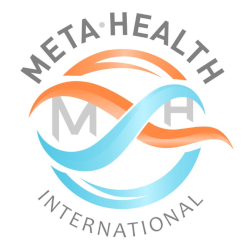Fresh fruit and veggies are great! They provide stored sun energy, vitamins, they connect us with our ecosystem and make us happy. On fresh leaves, there are bacteria – yes they belong there! For example lactobacteria. And those can do wonders with our food, potentiate the vitamin content and conserve it at the same time, so that even in winter, we can eat “sunshine”.
Lactofermented food like sauerkraut, kimchi (or fermented beetroot, carrots, cucumbers, onions…) contain more vitamin C and more antioxidants than raw food [1], and the bacteria also produce vitamins from the B-complex as well as vitamin K! The minerals contained are calcium, magnesium, potassium, and the trace elements iodine, iron and zinc. Fermented food is full of antioxidants, catching free radicals and preventing ageing. This effect was demonstrated even for heated sauerkraut [2]!
To recover your gut microbes, as you want to after treatment with antibiotics, you need to eat “living” raw and unheated sauerkraut or it’s juice. According to scientific studies [3][4][5] this can also prevent and even stop tumor growth.
In this video I show you how I make my own sauerkraut easily at home:
As META-Health Practitioner I compare fermentation also to processing of emotional experiences and thoughts that can lie at the root of disease – and our approach is accordingly:
- we break the problem down into smaller bits
- we take it out of it’s original context (here: the aerobic environment) which make it possible to change the old pattern of interpretation and behaviour
- we activate internal and external helpers and resources (here: the bacteria), and are aware of our belonging, community and support in the niches of our ecosystem
- And then, transformation needs a little time – for sustainability!
Study the methodology of health!
Sources:
[1] ANTIOXIDANT ACTIVITY OF EXTRACTS OF WHITE CABBAGE AND SAUERKRAUT
Ewa Ciska, Magdalena Karamaæ, Agnieszka Kosiñska
POLISH JOURNAL OF FOOD AND NUTRITION SCIENCES 2005
[2] https://www.ncbi.nlm.nih.gov/pubmed/26065745
[3] https://www.ncbi.nlm.nih.gov/pubmed/22716309
[4] https://www.ncbi.nlm.nih.gov/pubmed/22173777
[5] https://www.ncbi.nlm.nih.gov/pubmed/20170112/
 META-Healthy Life articles are created by professionals and friends of META-Health International CIC, supporting individual and global health by deepening and sharing our understanding of how resilience and well-being are achieved.
META-Healthy Life articles are created by professionals and friends of META-Health International CIC, supporting individual and global health by deepening and sharing our understanding of how resilience and well-being are achieved.